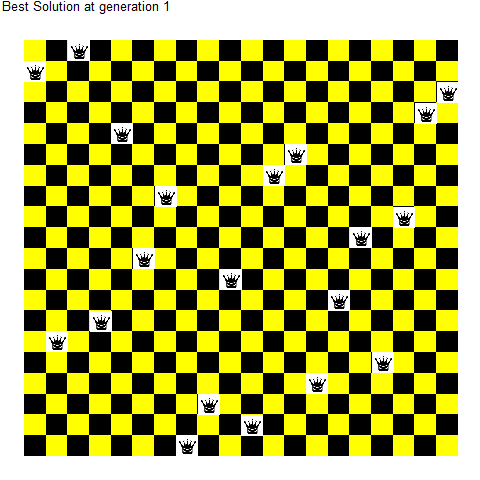私はちょうどPythonでnqueenの問題を解決しました。このソリューションでは、n個のクイーンズをnXnチェス盤に配置するためのソリューションの合計数が出力されますが、n = 15で試してみると、答えを得るのに1時間以上かかります。誰でもコードを見て、このプログラムをスピードアップするためのヒントを教えてください......初心者のpythonプログラマー。n-queenパズルを解く
#!/usr/bin/env python2.7
##############################################################################
# a script to solve the n queen problem in which n queens are to be placed on
# an nxn chess board in a way that none of the n queens is in check by any other
#queen using backtracking'''
##############################################################################
import sys
import time
import array
solution_count = 0
def queen(current_row, num_row, solution_list):
if current_row == num_row:
global solution_count
solution_count = solution_count + 1
else:
current_row += 1
next_moves = gen_nextpos(current_row, solution_list, num_row + 1)
if next_moves:
for move in next_moves:
'''make a move on first legal move of next moves'''
solution_list[current_row] = move
queen(current_row, num_row, solution_list)
'''undo move made'''
solution_list[current_row] = 0
else:
return None
def gen_nextpos(a_row, solution_list, arr_size):
'''function that takes a chess row number, a list of partially completed
placements and the number of rows of the chessboard. It returns a list of
columns in the row which are not under attack from any previously placed
queen.
'''
cand_moves = []
'''check for each column of a_row which is not in check from a previously
placed queen'''
for column in range(1, arr_size):
under_attack = False
for row in range(1, a_row):
'''
solution_list holds the column index for each row of which a
queen has been placed and using the fact that the slope of
diagonals to which a previously placed queen can get to is 1 and
that the vertical positions to which a queen can get to have same
column index, a position is checked for any threating queen
'''
if (abs(a_row - row) == abs(column - solution_list[row])
or solution_list[row] == column):
under_attack = True
break
if not under_attack:
cand_moves.append(column)
return cand_moves
def main():
'''
main is the application which sets up the program for running. It takes an
integer input,N, from the user representing the size of the chessboard and
passes as input,0, N representing the chess board size and a solution list to
hold solutions as they are created.It outputs the number of ways N queens
can be placed on a board of size NxN.
'''
#board_size = [int(x) for x in sys.stdin.readline().split()]
board_size = [15]
board_size = board_size[0]
solution_list = array.array('i', [0]* (board_size + 1))
#solution_list = [0]* (board_size + 1)
queen(0, board_size, solution_list)
print(solution_count)
if __name__ == '__main__':
start_time = time.time()
main()
print(time.time()

あなたは正しい、あなたのアルゴリズムはO(N!)であることを認識していますか?あなたが一定の要因よりも何かを得ると信じる理由はありません。 – ephemient
それをチェックしていないが、ウィキはn = 14に対して45kの解があると言っている。それはexpotentialの増加であるので、n = 15の方がさらに賭けることができる。最適なアルゴリズムでは、これは複雑な問題です。あなたのものは最適ではありません)。はるかに小さいn(例えば、8)を試してください。 – delnan
http://www.durangobill.com/N_Queens.htmlには、N = 26までの解決策の数が含まれています。 – 9000